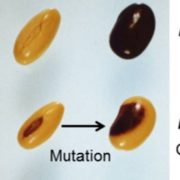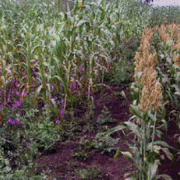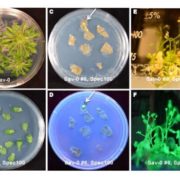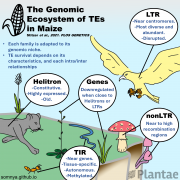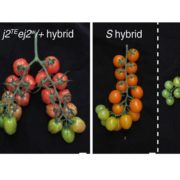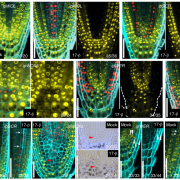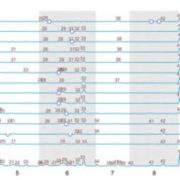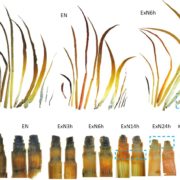A novel starch granule size distribution in Arabidopsis thaliana is associated with differences in phosphorylation
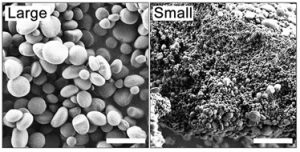 During the day, starch is synthesized in the chloroplasts of leaves and stored as starch granules, before being degraded in the subsequent night. In Arabidopsis thaliana, starch granules are discoid in shape. Some mutants have round or elongated granules, yet all these mutants have a homogenous starch granule morphology. Here Li et al. generated Arabidopsis thaliana double mutants for two genes involved in starch degradation – STARCH EXCESS 4 (SEX4) and DISPROPORTIONATING ENZYME2 (DPE2). Surprisingly there was a non-homogenous distribution of starch granules in the chloroplasts of dpe2sex4 mutants, with populations of large and small starch granules with 5-fold difference in size. Phosphorylation has a large effect on starch granules, thus the authors measured phosphate levels in the large and small granules. When accounting for surface area, small granules had a 37% reduction in phosphate content compared to large granules. There were also differences in phosphate distribution, with phosphate distributed throughout the small granules compared to being mainly on the surface of the large granules. Hence, the authors have discovered a novel starch granule size distribution in Arabidopsis thaliana dep2sex4 mutants which may be attributed to differences in starch phosphorylation. (Summary by Rose McNelly @Rose_McN) Plant Physiol. 10.1093/plphys/kiad656
During the day, starch is synthesized in the chloroplasts of leaves and stored as starch granules, before being degraded in the subsequent night. In Arabidopsis thaliana, starch granules are discoid in shape. Some mutants have round or elongated granules, yet all these mutants have a homogenous starch granule morphology. Here Li et al. generated Arabidopsis thaliana double mutants for two genes involved in starch degradation – STARCH EXCESS 4 (SEX4) and DISPROPORTIONATING ENZYME2 (DPE2). Surprisingly there was a non-homogenous distribution of starch granules in the chloroplasts of dpe2sex4 mutants, with populations of large and small starch granules with 5-fold difference in size. Phosphorylation has a large effect on starch granules, thus the authors measured phosphate levels in the large and small granules. When accounting for surface area, small granules had a 37% reduction in phosphate content compared to large granules. There were also differences in phosphate distribution, with phosphate distributed throughout the small granules compared to being mainly on the surface of the large granules. Hence, the authors have discovered a novel starch granule size distribution in Arabidopsis thaliana dep2sex4 mutants which may be attributed to differences in starch phosphorylation. (Summary by Rose McNelly @Rose_McN) Plant Physiol. 10.1093/plphys/kiad656


